QuestionHello my question is not concerning turtles but I thought I would ask since there arent many experts in reptiles.......
I cant find a cover to fit my 33 gallon tank, even if I do I think it will be quite costly because a 10 gallon cover is twenty dollars, anyway I figure I'll make my own cover but was wondering what should I use? Wire window screen wouldnt be strong enough to support the lamps weight would it?
AnswerThe key question here is what are you keeping in the tank?
Some herps, such as most snakes, will work their noses at any possible opening. If you are using screen, wire hardware cloth, etc., this will result in severe injury for the snake.
Some herps, like larger lizards, are strong enough to damage some materials, like window screen.
Other herps are strong enough to lift off or break other materials like thin plastics, etc.
MOST herps need natural sunlight or high-quality sunlight simulations to allow them to produce vitamin D in their skin and the parts of light they need (the ultraviolet) will not pass through glass or most plastic.
MOST herps also need a good supply of fresh air. Many tank lids trap old air (to keep temps or humidity high) but also trap the air and make it quite stale. Poor air circulation adds to repiratory problems.
So, you need a top that...
1. Won't injure the animals
2. Is strong and secure enough for the species you are keeping
3. Lets in UV light
4. Allows fresh air circulation
5. Helps keep temps and humidity correct
6. Allows you a small opening for feeding and watering, and a bigger opening for cleaning
7. Looks good enough to fit your tastes.
Few commercial lids really do all of this.
Now, having said that, you can make a good lid in any of several ways. Fiberglass window screening can be stapled to a simple wooden frame and works for many herps. You can replace the fiberglass with hardware cloth for stronger herps unless it will injure them.
A sheet of Lexan or other tough, stiff plastic can be drilled (a LOT) for air. If you countersink the holes on the bottom, it is about as safe for tender noses as you can get. Lexan does not allow for UV light, however. If you make enough holes, however, this is not a big problem.
[Even with air holes, there is not a lot of air circulation in a plastic lid. Some people add a small fan to increase air flow.]
You can use any of several designs of perforated metal or plastic you will find in a good home store- as long as the stuff works for the species you want to keep.
Note: It is generally a bad idea to rest heating lamps or lighting directly on any top you use. Try to support them from overhead or from a frame designed for them. If they are directly on the lid, the lid may overheat under them can casue damage to the lid or injury to the animals.
Heat lamps add a lot of problems to the design issues. They will melt plastics or fiberglass, and overheat glass, metals and wire mesh.
You can minimize this by using other heating systems to reduce your needs for heat lamps- For example, most keepers prefer using an undertank heater to provide the basic tank temp. They then use hot rocks or something similar to provide warm spots, and small heating spotlights to create basking areas during the hottest part of the day.
I hope this helps. If not, let me know what kind of animal you have and I'll try to be more specific!

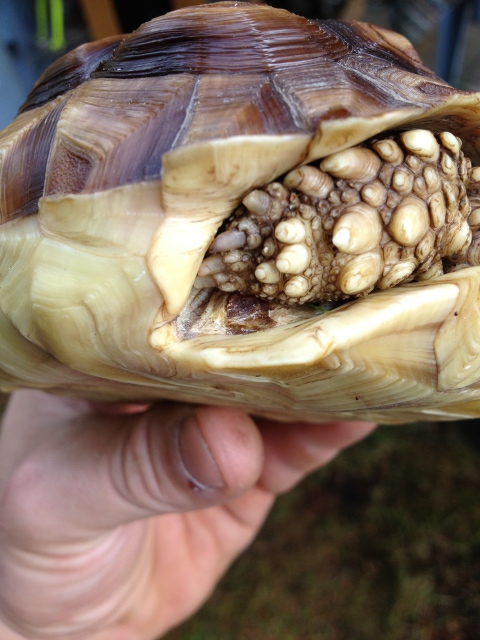 sulcata
Question
scab scab
Hello i have aquired a
sulcata
Question
scab scab
Hello i have aquired a
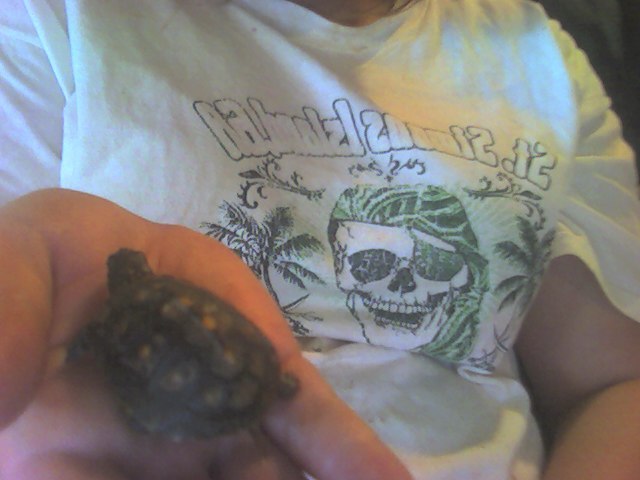 Tortoise or Turtle?
Question
The turtle or tortoise
I recently found a baby
Tortoise or Turtle?
Question
The turtle or tortoise
I recently found a baby
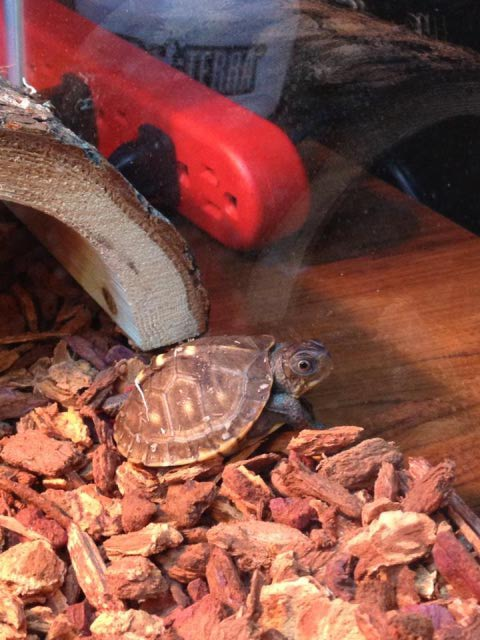 Baby Eastern Box Turtle
QuestionQUESTION: I just acquired a baby eastern box tu
Baby Eastern Box Turtle
QuestionQUESTION: I just acquired a baby eastern box tu
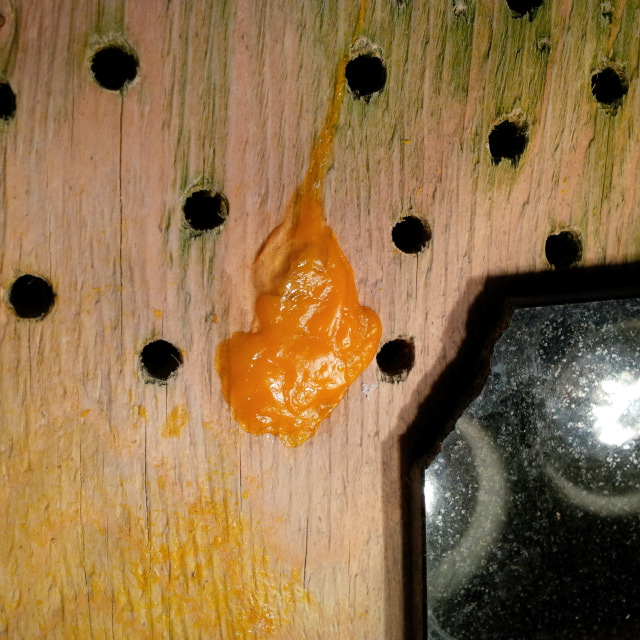 sick turtle?
Questioncloseup
further
QUESTION: Hi,
I
sick turtle?
Questioncloseup
further
QUESTION: Hi,
I
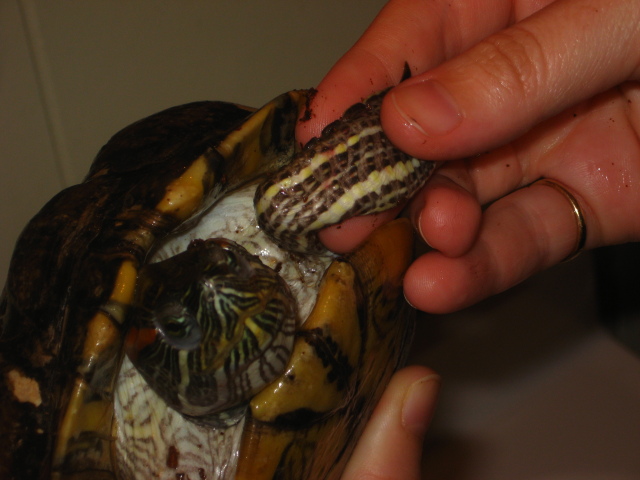 red eared slider shell rot
Question
turtles leg
We have a red eared slider, about
red eared slider shell rot
Question
turtles leg
We have a red eared slider, about